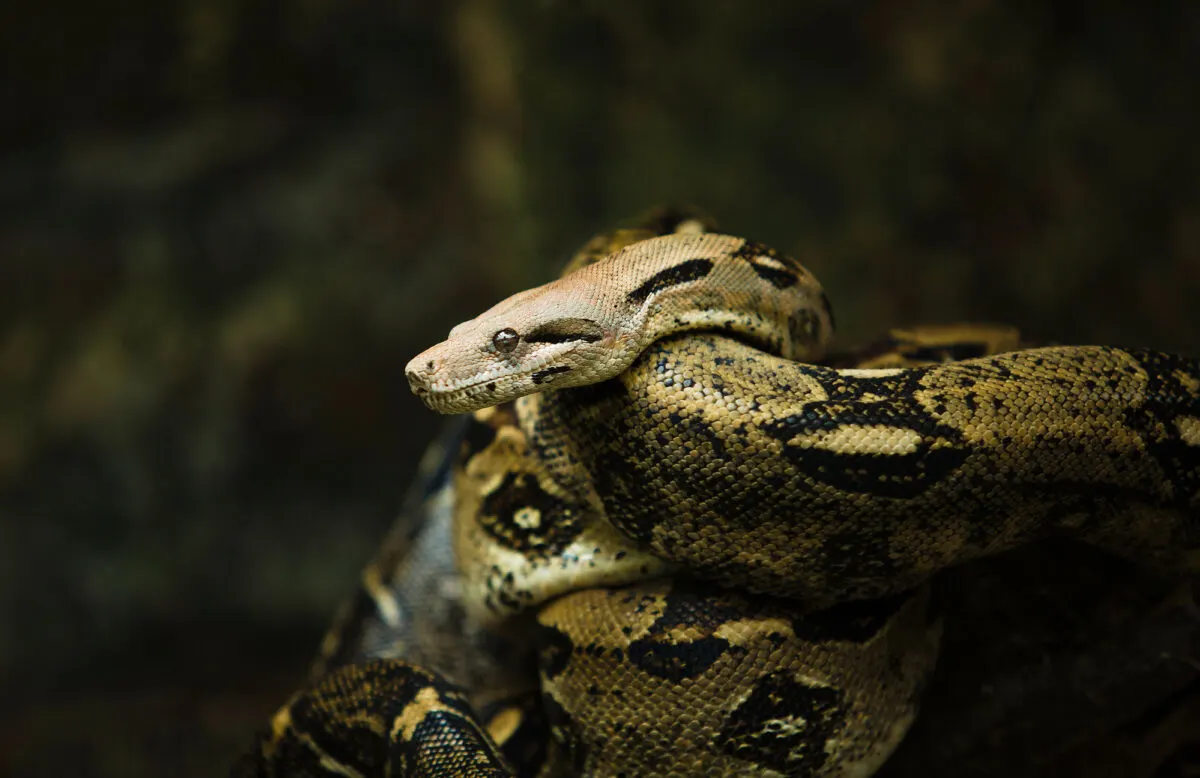In the vast and diverse world of reptiles, the Boa Constrictor and Western Diamondback are remarkable species that captivate the imagination of animal enthusiasts and researchers alike. These serpentine titans embody the extraordinary adaptations that have allowed them to thrive in their respective habitats. With their powerful constriction ability, the Boa Constrictor and the Western Diamondback, armed with venomous fangs and a signature rattle, command attention and respect.
This article will delve into the unique characteristics, habitats, feeding habits, and fascinating facts about these two incredible reptiles. Furthermore, we will explore how they stack up against each other in their hunting techniques, defense mechanisms, and even their reproduction and parental care approaches. Join us as we witness a thrilling showdown between these intriguing creatures, each equipped with its own skills perfectly adapted for survival.
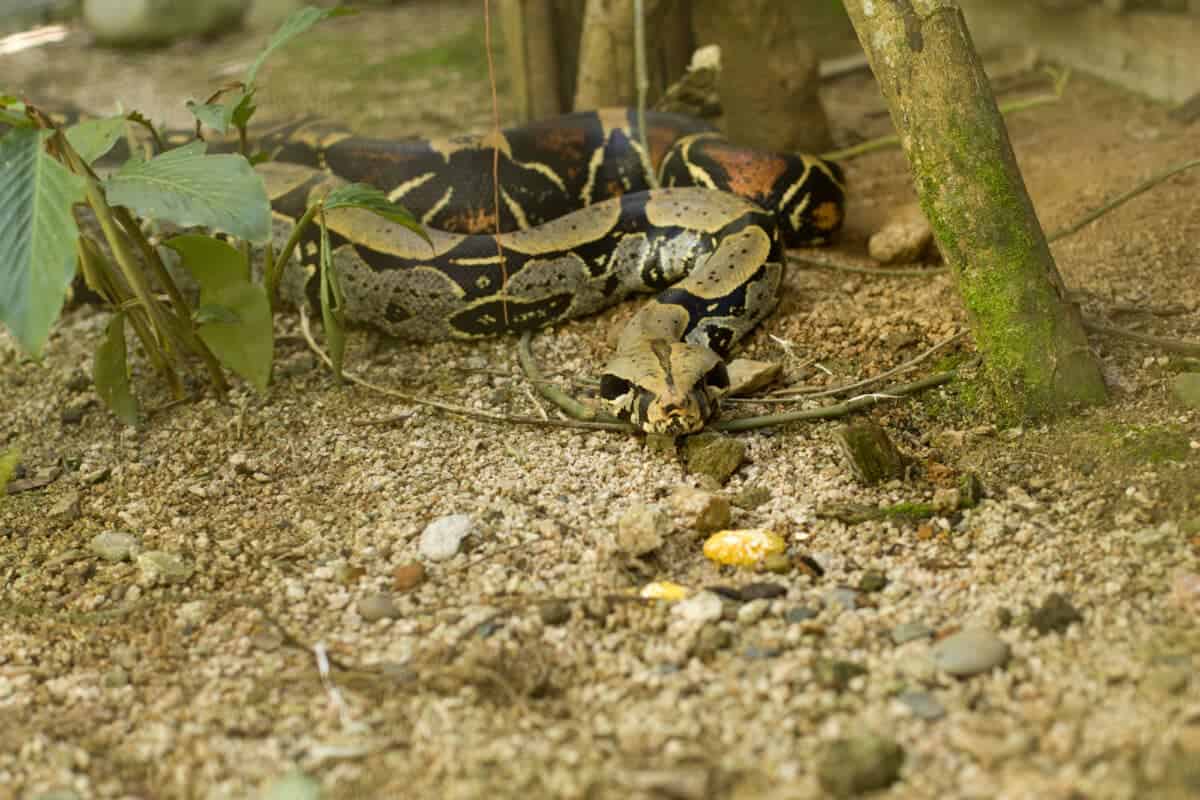
Slither to any section below!
Comparison Table: Boa Constrictor vs. Western Diamondback
| Boa Constrictor | Western Diamondback | |
| Scientific Name | Boa constrictor | Crotalus atrox |
| Family | Boidae | Viperidae |
| Average Length | 6 to 10 feet (up to 12+ feet in some cases) | 3 to 5 feet (occasionally exceeding 6 feet) |
| Habitat | Tropical rainforests, savannas, semi-arid regions | Deserts, grasslands, woodlands |
| Feeding Strategy | Constrictor (non-venomous) | Venomous (uses fangs to inject venom) |
| Diet | Birds, mammals, reptiles | Small mammals, birds, lizards, sometimes other snakes |
| Venomous | No | Yes |
| Hunting Technique | Ambush and constriction | Strike and venomous bite |
| Defense Mechanisms | Coiling, hissing, retreat | Rattle, strike, retreat |
| Reproduction | Ovoviviparous (live-bearing) | Oviparous (egg-laying) |
| Parental Care | No parental care | No parental care |
| Conservation Status | Varies by subspecies | Least Concern |
Boa Constrictor: The Mighty Squeeze
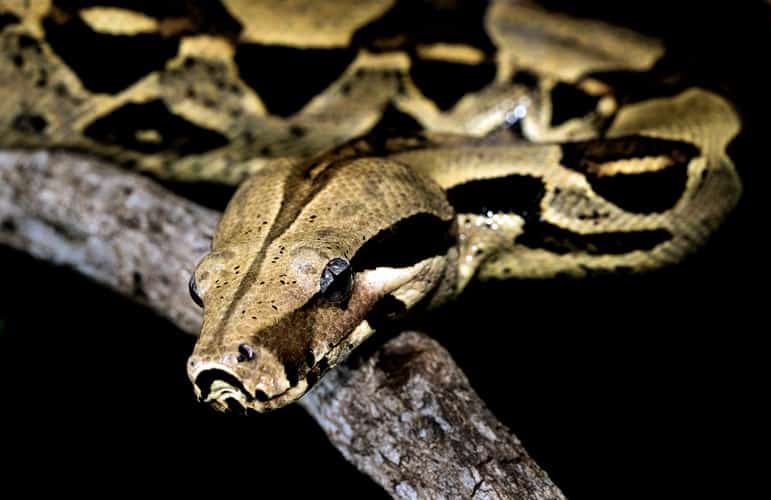
A. Physical Attributes
The Boa Constrictor (Boa constrictor) is an imposing snake species belonging to the family Boidae. One of the largest snakes in the world, it boasts an impressive physique characterized by its robust body and muscular build. Adult Boa Constrictors average 6 to 10 feet long, though some individuals can exceed 12 feet, making them a formidable presence in their habitats.
One of the most striking features of the Boa Constrictor is its mesmerizing coloration and patterns. Their dorsal side is adorned with a beautiful mosaic of markings, varying depending on the specific subspecies and location. Earthy tones, such as browns, reds, and tans, often dominate their color palette, aiding in camouflage within their natural surroundings.
B. Habitat and Range
Boa Constrictors are predominantly found in the Americas, inhabiting many ecosystems, from tropical rainforests and savannas to semi-arid regions. Their distribution stretches from the southern United States to Central America and South America. Among the various subspecies, some have adapted to life in trees, while others are more terrestrial, easily navigating through the undergrowth.
C. Feeding Habits
As constrictors, Boa Constrictors have a distinct hunting strategy. They are non-venomous, relying instead on their incredible strength to overpower and subdue their prey. When hunting, these serpents employ an ambush technique, waiting for suitable prey to pass by. Once within striking range, the Boa Constrictor swiftly coils around its victim, applying powerful muscular constriction. This process prevents the prey from breathing, eventually leading to suffocation.
Boa Constrictors exhibit a broad diet, consuming various animals, including birds, mammals, and other reptiles. Their impressive ability to adapt their diet contributes to their success as predators and ensures their survival in various environments.
D. Natural Predators and Threats
Despite being formidable predators, Boa Constrictors still face threats from other animals in the wild. While they have relatively few natural predators due to their size and strength, larger predatory mammals and birds of prey may occasionally pose a risk, especially to younger individuals.
However, the biggest threat to Boa Constrictors comes from human activities, such as habitat destruction, poaching for the pet trade, and the unfortunate misunderstanding of these creatures’ nature. Conservation efforts are crucial to ensuring the long-term survival of this awe-inspiring species.
E. Fascinating Facts
- Boa Constrictors are known for their adaptability and have successfully established populations in areas outside their native range, often due to accidental or intentional introductions.
- These snakes have heat-sensitive pits along their jaws, allowing them to detect warm-blooded prey, even in complete darkness.
- Boa Constrictors are not venomous, but their saliva contains mild toxins that aid in the digestion of their meals.
Check out: How To Deal With A Bearded Dragon Bite.
Western Diamondback: The Venomous Rattler
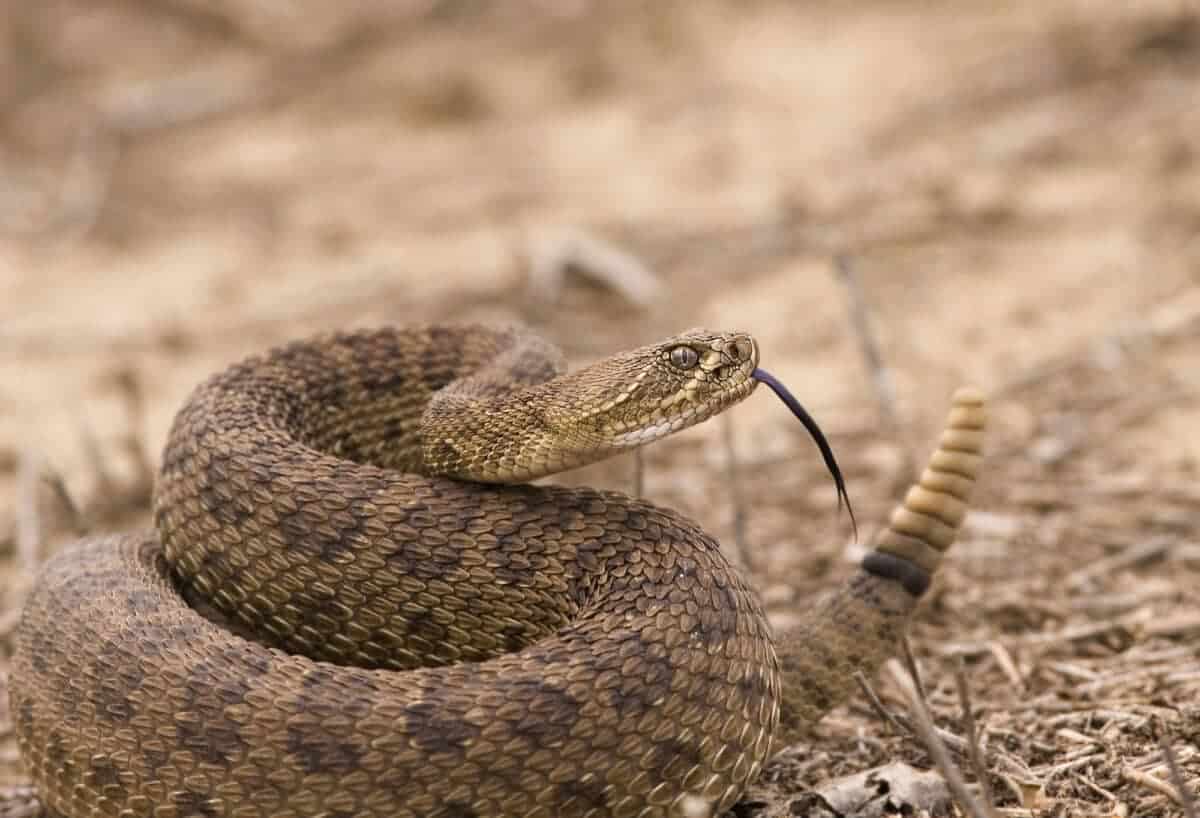
A. Physical Attributes
The Western Diamondback (Crotalus atrox) is a striking and venomous rattlesnake species native to North America. Known for its distinctive diamond-shaped patterns along its back and a telltale rattle on its tail, this snake evokes both fear and fascination. Western Diamondbacks exhibit sexual dimorphism, with females typically growing larger than males.
Measuring between 3 to 5 feet in length, with some exceptional individuals exceeding 6 feet, the Western Diamondback is a potent predator in its habitat. Their coloration serves as effective camouflage, blending into their range’s arid and rocky landscapes.
B. Habitat and Range
The Western Diamondback rattlesnakes are widely distributed across the southern United States, including regions of Texas, Arizona, New Mexico, and parts of California. They thrive in various habitats, from deserts and grasslands to woodland areas, and are often found in rocky outcrops and caves to seek shelter from extreme temperatures.
C. Feeding Habits
As a venomous snake, the Western Diamondback employs a venomous bite to subdue its prey. Their venom is a potent cocktail of proteins and enzymes that rapidly immobilize their victims, making them formidable hunters. They primarily prey on small mammals, birds, lizards, and sometimes other snakes, striking their prey with precision and patience.
Western Diamondbacks are equipped with a pair of specialized, hollow fangs that they use to inject venom into their prey. After delivering a lethal bite, the snake tracks its victim using its extraordinary ability to detect body heat and scent trails.
D. Venom and Its Effects
The venom of the Western Diamondback rattlesnake is highly toxic and poses a significant threat to its prey. For humans, a bite can be a serious medical emergency if left untreated. The venom primarily targets the nervous system, leading to tissue damage, swelling, and intense pain around the bite site. In severe cases, it can cause systemic symptoms, such as nausea, dizziness, and even difficulty breathing.
Immediate medical attention is crucial in the event of a bite, and antivenom is administered to neutralize the venom’s effects. Fortunately, fatalities from Western Diamondback bites are relatively rare due to the availability of antivenom and advancements in medical care.
E. Natural Predators and Threats
While adult Western Diamondbacks have few natural predators, they face some risks from larger mammals and birds of prey. However, their most significant threat comes from human encounters. Due to fear and misunderstanding, many snakes, including Western Diamondbacks, are often killed by humans, leading to population declines in certain areas.
Conservation efforts, education about these snakes’ essential role in their ecosystems, and responsible coexistence are essential to safeguarding these intriguing reptiles.
F. Fascinating Facts
- The rattle on a Western Diamondback’s tail is composed of keratin, the same material found in human fingernails and hair. It serves as a warning of potential threats and acts as a signal to communicate with other snakes.
- These rattlesnakes have specialized infrared-sensing organs located between their eyes and nostrils. This allows them to detect even the slightest temperature differences, helping them locate prey efficiently.
Check out: Green Iguana Bites: 10 Essential Tips for Safe Pet Ownership.
Face-Off: Boa Constrictor vs. Western Diamondback
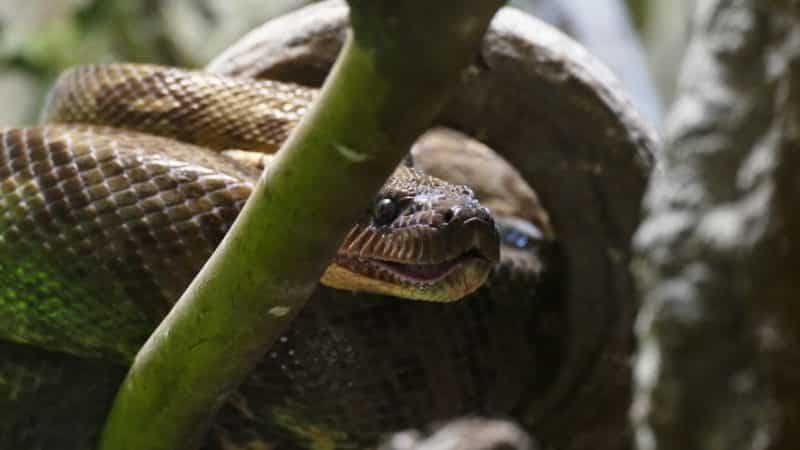
A. Hunting Techniques
The Boa Constrictor and Western Diamondback employ vastly different hunting techniques due to their unique adaptations. On the other hand, after ambushing and coiling around them, Boa constrictors rely on their powerful muscles to suffocate prey. On the other hand, Western Diamondbacks rely on their venomous fangs to immobilize their prey quickly.
While the Boa Constrictor’s method is effective against a broad range of prey, it requires close contact and physical restraint. In contrast, the Western Diamondback’s venomous bite allows it to incapacitate and track its prey, even from a distance, using its impressive heat-sensing pits.
B. Defense Mechanisms
Both the Boa Constrictor and Western Diamondback possess effective defense mechanisms. The Boa Constrictor, lacking venom, relies on its imposing size, powerful constriction, and cryptic coloration to avoid potential threats. When threatened, it may hiss loudly and strike as a warning, but its primary defense is to retreat to safety.
On the other hand, the Western Diamondback’s venomous bite serves as a potent defense against predators and perceived threats. The rattle on its tail acts as a warning, signaling its presence and deterring potential aggressors. It may coil into a defensive posture when confronted, preparing to strike if necessary.
C. Reproduction and Parental Care
Regarding reproductive strategies, both species have distinct approaches. Boa Constrictors are ovoviviparous, meaning the females retain eggs inside their bodies until they hatch, giving birth to live young. After birth, baby Boa Constrictors are independent and receive no parental care.
On the other hand, Western Diamondbacks are oviparous, laying eggs that hatch outside the female’s body. However, they do not provide parental care beyond laying the eggs. The hatchlings must fend for themselves and face numerous challenges from the moment they emerge.
While their reproductive and parental care strategies differ, both the Boa Constrictor and Western Diamondback have evolved methods that ensure the survival of their respective offspring in their unique environments.
Check out: The Largest Gorilla.
Frequently Asked Questions
The venom of the Western Diamondback rattlesnake is potent and poses a serious risk to humans if bitten. The severity of the bite’s effects depends on factors such as the location of the bite, the amount of venom injected, and the individual’s health. Prompt medical attention and administration of antivenom are essential to mitigate the potential harm caused by the venom.
While Boa Constrictors are powerful predators capable of subduing and consuming a variety of prey, it is highly unlikely for them to prey upon a venomous snake like the Western Diamondback in the wild. Confronting such a dangerous and well-armed opponent could prove fatal for the Boa Constrictor. These snakes usually stick to their preferred birds, mammals, and other reptiles’ diet.
The conservation status of both species varies depending on their respective habitats and subspecies. Some Boa Constrictor populations may face threats due to habitat destruction, illegal pet trade, and human persecution. However, many subspecies are not considered endangered and are relatively stable in the wild.
Though not currently endangered, the Western Diamondback faces challenges due to habitat loss and human activities. Conservation efforts, public awareness, and responsible habitat management are crucial for these snakes’ long-term survival.
Key Points
| The Boa Constrictor is found in tropical rainforests, savannas, and semi-arid regions of the Americas. |
| The Western Diamondback inhabits deserts, grasslands, and woodlands in the southern United States. |
| Boa Constrictors rely on constriction and have a broad diet, while Western Diamondbacks employ venomous bites for hunting. |
| Boa Constrictors are ovoviviparous, giving birth to live young, whereas Western Diamondbacks are oviparous, laying eggs. |
| Both snakes exhibit distinct defense mechanisms suited to their hunting styles and habitats. |
| While the Boa Constrictor is not endangered, various subspecies face conservation concerns. Though not endangered, the Western Diamondback needs protection due to human-related threats. |
Wrap Up
In reptiles, the Boa Constrictor and Western Diamondback stand out as awe-inspiring creatures, each with unique adaptations and survival strategies. With its mighty constriction ability, the Boa Constrictor relies on strength and stealth to overpower its prey, showcasing remarkable versatility in various environments.
The Western Diamondback, armed with venomous fangs and a signature rattle, exemplifies nature’s ingenuity in the evolution of hunting and defense mechanisms. Its venomous bite allows it to quickly immobilize and track its prey, while its rattle is a potent warning of potential threats.
As nature’s champions, these serpentine titans play crucial roles in their ecosystems, regulating prey populations and maintaining the delicate balance of nature. However, both species face threats, mainly from human activities and behavioral misconceptions.
Conservation efforts and understanding their vital ecological roles are essential to protect these magnificent reptiles for future generations. By coexisting responsibly with these creatures and safeguarding their habitats, we can ensure the continuation of their captivating presence in the wild.
So, the next time you venture into the realms where these remarkable snakes dwell, remember the grand spectacle of the Boa Constrictor and Western Diamondback – a testament to the wonders of the natural world and the intricate dance of predator and prey.
If you enjoyed this article as much as me, check out our related article links below for more!
Next up:
- The Northern Pacific Rattlesnake Bite
- Mighty Komodo Dragon Bite
- What To Do After A Red-Bellied Black Snake Bite
- How Can You Avoid Getting Bitten By A Yellow Sac Spider
- The Northern Copperhead Bite
- Washington’s Western Rattlesnake
- Discover San Francisco’s Most Dangerous Animals
- Unearth the Reality of Florida’s Venomous Spiders
- Great White Shark Vs. Bull Shark
- Watch Starfish Walking on the Beach - April 24, 2024
- Watch Bison Stampede Around Bus in Yellowstone - April 24, 2024
- How to Survive a Tiger Attack - April 23, 2024

